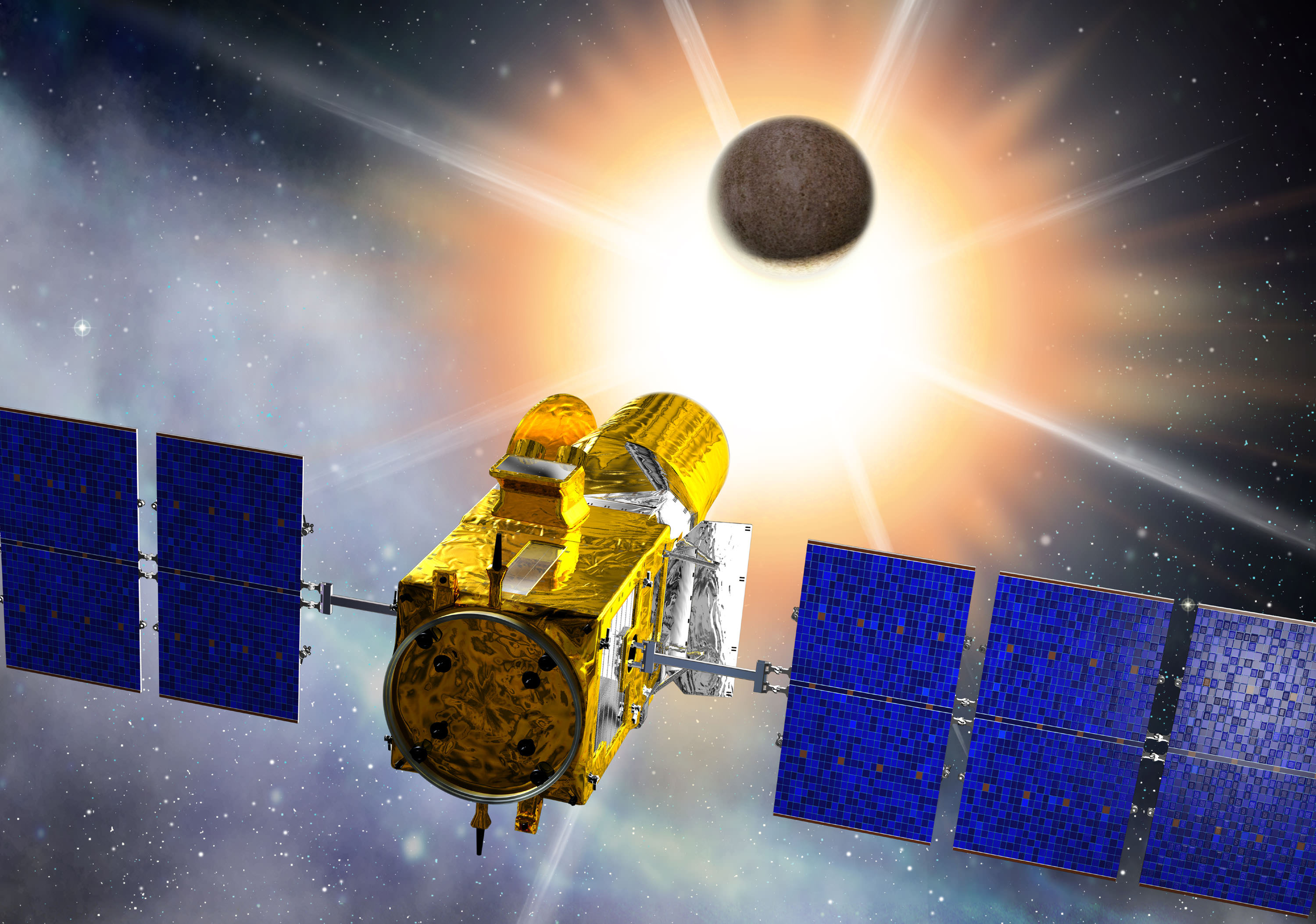[/caption]
Astronomers have been able to monitor a the sound waves of a star 100 light years away and found a magnetic cycle analogous to our Sun’s solar cycle. “Essentially, the star is ringing like a bell,” says scientist Travis Metcalfe from the National Center for Atmospheric Research, a co-author of the new study. “As it moves through its starspot cycle, the tone and volume of the ringing changes in a very specific pattern, moving to higher tones with lower volume at the peak of its magnetic cycle.”
The team examined the star’s acoustic fluctuations, using a technique called stellar seismology. The team hopes to assess the potential for other stars in our galaxy to host planets, including some perhaps capable of sustaining life.
“Understanding the activity of stars harboring planets is necessary because magnetic conditions on the star’s surface could influence the habitable zone, where life could develop,” says CEA-Saclay scientist Rafael Garcia, the study’s lead author.
The scientists studied a star known as HD49933, which is located 100 light years from Earth in the constellation Monoceros, just east of Orion. By stellar seismology, they detected the signature of “starspots,” areas of intense magnetic activity on the surface that are similar to sunspots. While scientists have previously observed these magnetic cycles in other stars, this was the first time they have discovered such a cycle using this method.
“We’ve discovered a magnetic activity cycle in this star, similar to what we see with the Sun,” says co-author and NCAR scientist Savita Mathur. “This technique of listening to the stars will allow us to examine potentially hundreds of stars.”
HD49933 is much bigger and hotter than the Sun, and its magnetic cycle is much shorter. Whereas past surveys of stars have found cycles similar to the 11-year cycle of the Sun, this star has a cycle of less than a year.
Studying many stars with stellar seismology could help scientists better understand how magnetic activity cycles can differ from star to star, as well as the processes behind such cycles. The work could especially shed light on the magnetic processes that go on within the Sun, furthering our understanding of its influence on Earth’s climate. It may also lead to better predictions of the solar cycle and resulting geomagnetic storms that can cause major disruption to power grids and communication networks.
The scientists examined 187 days of data captured by the international Convection Rotation and Planetary Transits (CoRoT) space mission.
This short cycle is important to scientists because it may enable them to observe an entire cycle more quickly, thereby gleaning more information about magnetic patterns than if they could only observe part of a longer cycle.
Source: NCAR


I stand confused about the “sound waves” emanating.
‘Hearing stars’ is done though a process known as audification. One definition I found stated that: “Stellar seismology studies the internal structure of pulsating stars by the interpretation of their frequency spectra.That is data from the motion in a star’s spectrum is translated from light frequencies to much lower audio frequencies.”
@JOHNNY5,
See: Asteroseismology.
P.S. Also, see: Asteroseismology.org. (Cool website!)
Astroseismology is done with the sun and refined to an art so the interior can be imaged. it is similar to seismology on Earth and figuring out the interior.
LC
It seems quite likely to me that stars with different masses also have different cycles. I guess this should strongly depend on the star’s interior, especially its convective and radiative zones and their extend and location, which differ from star to star. The more data we get the better the picture will be and the easier we might understand what’s going, especially in our sun.
(P.S.: I don’t want to call the devils, but I wonder how ES proponents explain the results we gain from helioseismology, which clearly shows that the mainstream’s understanding of the sun is quite good. 😉 )
@Dr. Flimmer: What is an ES proponent?
“…mainstream’s understanding of the sun is quite good.” A tad too good? LOL!
There is a reason why I used the acronym. I guess almost everyone (including you) knows precisely who I meant here.
And btw: No, the understanding of the sun is not “a tad to good”, in fact, there are some mysterious things remaining, which could be cleared up by observing other stars, just as I wrote in my previous post. Nonetheless, we know a LOT about the sun. And we also understand a LOT – but not everything, and that’s good, otherwise all the excitement would be gone, would it not? 😉
ES stands for ELECTRO SYNTHESIS instead of Thermonuclear Fusion and to answer your question, they probably would say that its a computer model that like a movie will produce the results of the programmer in this case giving stars cores where two hydrogens form helium instead of some other crazy way involving electrical charges at high temperatures
and another messenger worth shooting down
If they can hear a star like the sun ringing like a bell, then why aren’t our ears hurting? I’m convinced that their instruments are accuarate, but the interpretation of a ringing bell is fictious, and that it doesn’t really ring in space for anybody to hear.